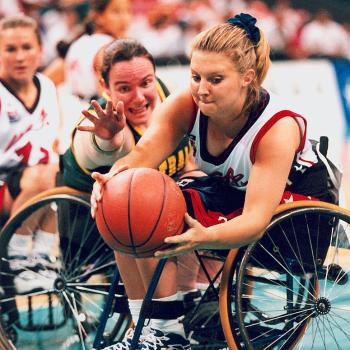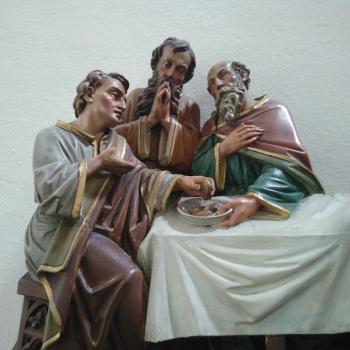When we say something is a “type” of Christ, what we mean is that it in some way reflects the reality of Our Lord. For example, Isaac is a “type” of Christ when he willingly lets his father offer him as a sacrifice to God.
(Early monotheists had to work through a few misunderstandings in how this whole “religion” thing was supposed to work. Hint: The real God doesn’t want you to ritually sacrifice your children, even if you’ve been raised to think that’s just the cure for all that ails. When so inclined, look for Ram in thicket.)
So. This afternoon after Holy Communion, I was struck by the image of Father E. carrying the empty chalice and ciboria back to the sacristy to be purified. Types of Mary, I realized. These sacred vessels had just held Our Lord, and now they don’t, or soon won’t, but they remain sacred.
I’ve assisted, back in the day, at a living-room Mass in which a tea saucer was used for a paten. I mention that not to scandalize, but because ordinarily the vessels and linens used at Mass are created from the outset with the intention that they will be used for sacred purposes. One doesn’t just flip through the Williams-Sonoma catalog looking for the next best thing in altar gear.
There’s a series of developments, thus, in the life of a sacred vessel:
- It is created with the intention of being used, ultimately, for sacred purposes.
- It is blessed or consecrated: Set aside for sacred use.
- It is put into use for its sacred purpose, such as bearing the Body, Blood, Soul, and Divinity of Our Lord.
If the sacred vessels are types of Mary, so also are we.
The image of the Queen of Heaven, standing at the head of her army dressed in battle array, is a real thing. She was first to bear Our Lord, and we follow behind her, doing our best to do as she did. From our very conception, we are created with a sacred purpose. At baptism and confirmation, we are set aside for that purpose. And from there, it’s only a matter of learning to use ourselves rightly: Filled with the Lord.
***
Interesting links I came across in fact-checking today:
Fr. Z rants about what priests do and don’t consecrate, and why intentions matter.
The USCCB answers FAQ’s about priestly ordination — interesting stuff!
Artwork: Circle of Arnau Bassa [Public domain], via Wikimedia Commons Click through and read the whole description – pile of art history trivia for you.













